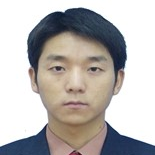Advanced Laser Technology and Applications
A special issue of Crystals (ISSN 2073-4352). This special issue belongs to the section "Inorganic Crystalline Materials".
Deadline for manuscript submissions: closed (26 August 2022) | Viewed by 12904
Special Issue Editors
Interests: laser spectroscopy; optical sensing; signal processing algorithm
Special Issues, Collections and Topics in MDPI journals
Interests: laser crystal; scintillator; optical material
Interests: spectroscopy; laser techniques; optical fiber sensing; photoelectric measurement; optics
Special Issues, Collections and Topics in MDPI journals
Special Issue Information
Dear Colleagues,
The invention of the laser has enabled mankind to master a powerful light source and tool, significantly promoting our scientific and technological progress, as well as illuminating our lives. To commemorate the 60th anniversary of the birth of the laser, we would like to invite famous young and middle-aged experts who are active in the front line of scientific research to present their latest work, including laser research and progress, laser materials, laser beam characteristics, laser manufacturing, laser technology and applications, large scientific laser devices, etc., to demonstrate the latest development, progress and future trends of lasers and the related fields.
This Special Issue aims at gathering scientific contributions focused on the current state of the art of lasers, laser techniques and on valuable advances in the design, fabrication, characterization, and application of novel lasers.
Prof. Jingsong Li
Prof. Dr. Qingli Zhang
Prof. Zhirong Zhang
Guest Editors
Manuscript Submission Information
Manuscripts should be submitted online at www.mdpi.com by registering and logging in to this website. Once you are registered, click here to go to the submission form. Manuscripts can be submitted until the deadline. All submissions that pass pre-check are peer-reviewed. Accepted papers will be published continuously in the journal (as soon as accepted) and will be listed together on the special issue website. Research articles, review articles as well as short communications are invited. For planned papers, a title and short abstract (about 100 words) can be sent to the Editorial Office for announcement on this website.
Submitted manuscripts should not have been published previously, nor be under consideration for publication elsewhere (except conference proceedings papers). All manuscripts are thoroughly refereed through a single-blind peer-review process. A guide for authors and other relevant information for submission of manuscripts is available on the Instructions for Authors page. Crystals is an international peer-reviewed open access monthly journal published by MDPI.
Please visit the Instructions for Authors page before submitting a manuscript. The Article Processing Charge (APC) for publication in this open access journal is 2600 CHF (Swiss Francs). Submitted papers should be well formatted and use good English. Authors may use MDPI's English editing service prior to publication or during author revisions.
Keywords
- Laser sources
- Laser devices and materials
- Laser techniques
- Laser processing
- Laser spectroscopy
- Laser sensing
- Laser communication
- Laser storage
- Laser printing
- Laser-based sensors







